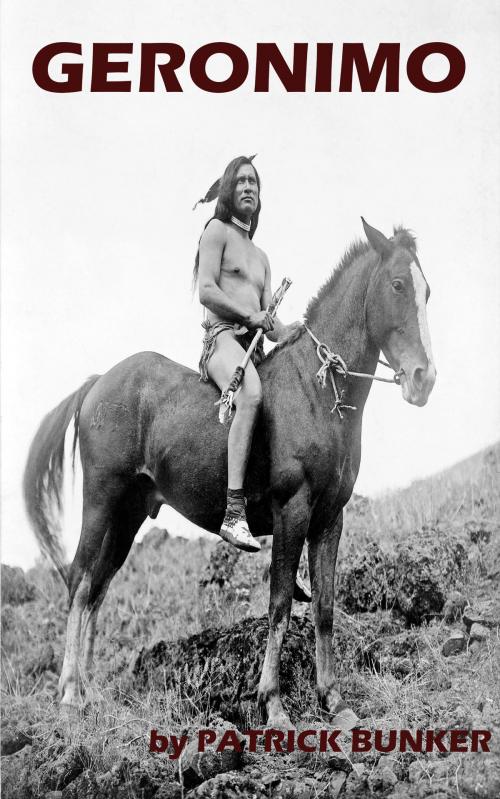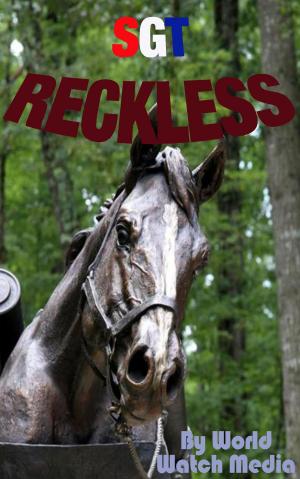| Author: | Patrick Bunker | ISBN: | 9780463307229 |
| Publisher: | Summary Station | Publication: | March 13, 2019 |
| Imprint: | Smashwords Edition | Language: | English |
| Author: | Patrick Bunker |
| ISBN: | 9780463307229 |
| Publisher: | Summary Station |
| Publication: | March 13, 2019 |
| Imprint: | Smashwords Edition |
| Language: | English |
Geronimo
The Inspirational Life Story of Geronimo; Warrior, Leader, Intellect, American Patriot, and Historical Native American
By Patrick Bunker
“Once I moved around like the wind. Now I surrender to you and that is all.” Geronimo’s words of March, 1886, spoken in Mexico to General George Crook were intended to end approximately twenty-six years of savage warfare on the part of both white settlers and Apaches in the southwestern part of the US. Geronimo surrendered, but a warning from a whisky salesman that the warriors would be killed once they were back in US territory, prompted Geronimo to escape the same day along with a band of about forty Apaches. A surrender followed by escape is only one of a series of controversial behaviors surrounding the life of Geronimo, one of the most well-known of Native American chiefs.
Like many aspects of Geronimo’s life, details of his birth are controversial. Geronimo states in his biography that he was born in Arizona in 1829. Experts on his life hold, however, that he was born near the middle fork of the Gila River in New Mexico about 1823. The specific details of Geronimo’s birth and early years are sparse due to the preliterate culture of Apaches. Yet, the customs and habits of Geronimo’s people offer us an understanding of their strong ties to the land for which they were willing to battle to the death. No churches, temples, mosques, or synagogues graced Apache land; instead, the land, itself, was sacred. Believing the Great Spirit had purposely placed the tribes in the southwest, a mother would bury her afterbirth near a fruit-bearing bush or tree and pray that her child would live to see many harvests of fruit from the tree. The tribe respected the “brotherhood of all things.”
Geronimo
The Inspirational Life Story of Geronimo; Warrior, Leader, Intellect, American Patriot, and Historical Native American
By Patrick Bunker
“Once I moved around like the wind. Now I surrender to you and that is all.” Geronimo’s words of March, 1886, spoken in Mexico to General George Crook were intended to end approximately twenty-six years of savage warfare on the part of both white settlers and Apaches in the southwestern part of the US. Geronimo surrendered, but a warning from a whisky salesman that the warriors would be killed once they were back in US territory, prompted Geronimo to escape the same day along with a band of about forty Apaches. A surrender followed by escape is only one of a series of controversial behaviors surrounding the life of Geronimo, one of the most well-known of Native American chiefs.
Like many aspects of Geronimo’s life, details of his birth are controversial. Geronimo states in his biography that he was born in Arizona in 1829. Experts on his life hold, however, that he was born near the middle fork of the Gila River in New Mexico about 1823. The specific details of Geronimo’s birth and early years are sparse due to the preliterate culture of Apaches. Yet, the customs and habits of Geronimo’s people offer us an understanding of their strong ties to the land for which they were willing to battle to the death. No churches, temples, mosques, or synagogues graced Apache land; instead, the land, itself, was sacred. Believing the Great Spirit had purposely placed the tribes in the southwest, a mother would bury her afterbirth near a fruit-bearing bush or tree and pray that her child would live to see many harvests of fruit from the tree. The tribe respected the “brotherhood of all things.”















